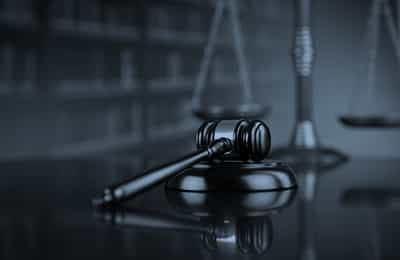Secondary victim claims in Personal Injury cases may, in certain circumstances, be brought by individuals who have not suffered direct harm as a result of a negligent act or omission resulting in an accident for example, but who have suffered a psychiatric injury as a result of witnessing, or being closely connected to, said accident. Specific legal criteria must be met for a successful claim. In this article we set out the position in English law; it is likely such principles would also be applied in the Isle of Man, in the absence of any contrary Manx practice.
Legal Footing
Following litigation arising out of the tragic Hillsborough stadium disaster (Alcock v Chief Constable of South Yorkshire Police [1991] UKHL 5), the courts have devised criteria (sometimes described as control mechanisms) that must be satisfied for someone to be classified as a secondary victim. Subsequent cases have refined and clarified the law, but the core criteria which must be present for a claim to be successful, and which were established in Alcock, remain essential and are:
1. Psychiatric harm reasonably foreseeable
A secondary victim claimant must establish that it was reasonably foreseeable that a person of normal susceptibility would suffer some psychiatric injury as a result of the defendant’s breach of duty. Importantly, this test is applied with hindsight and in light of all that has happened (McLoughlin v O’Brian [1983] 1 A.C. 401, per Lord Wilberforce at 420 and per Lord Bridge at 432). As interpreted by the Law Commission, “one should assess whether the psychiatric illness is reasonably foreseeable on the assumption that the defendant knows what has happened to the immediate victim.” (Liability for Psychiatric Illness Law Com. No.249, at paragraph 5.17)
2. Close tie of love and affection
A claimant must have a sufficiently close relationship with the primary victim. The courts generally presume such a tie exists between spouses, parents, and children, but other relationships, such as siblings or close friends, must provide evidence of the requisite closeness (McLoughlin).
3. Physical and temporal proximity to the index event
This requirement is explained in McLoughlin, per Lord Wilberforce:
“As regards proximity to the accident, it is obvious that this must be close in both time and space. It is after all, the fact and consequence of the defendant’s negligence that must be proved to have caused the “nervous shock”.”
Thus a bystander who witnesses an accident occur will satisfy this test. It is not strictly necessary for a claimant to have directly witnessed an accident and be present at the scene however. Someone who witnesses the “immediate aftermath” of an accident may also qualify as a secondary victim. Following McLoughlin that person must have had “direct perception of some of the events which go to make up the accident as an entire event.”
As to what might constitute the immediate aftermath or “the accident as an entire event”, in a road traffic accident for example, two authorities are relevant:
4. Suffering of sudden shock due to sight or hearing of the index event / its immediate aftermath
The last two requirements (suffering “shock”, and perception of the event causing the shock through sight or hearing) can practically be considered together. Shock suffered must have been due to the claimant’s perception of the index event, or its immediate aftermath which has variously been described as “the sudden appreciation by sight or sound of a horrifying event, which violently agitates the mind” (Alcock); “a sudden assault on the nervous system” (ibid); and “a sudden and unexpected shock to the nervous system.” (ibid).
It must be established that a Claimant was shocked or horrified by what they perceived (the factual element). They must also establish that their psychiatric illness (see below) was caused (in full or in part) by the shocking/horrifying experience (Vernon v Bosley (No. 1) 1997 1 All ER 577). In addition to the definitions of shock per the case of Alcock in the preceding paragraph, it can also be “one drawn out” emotionally shocking experience over a period of hours (Glamorgan NHS Trust v Walters [2002] EWCA Civ 1792). Shock which is the result of a legitimate concern that an accident might have happened, is also capable of satisfying the test (Hambrook v Stokes [1925] 1 K.B. 141). It is fair to say that establishing that shock was suffered is generally addressed through a Claimant’s own evidence (expert and lay) and in that sense, it is difficult to challenge.
5. A Recognised Psychiatric Injury
The claimant must suffer a recognised psychiatric injury, such as post-traumatic stress disorder (PTSD) or severe depression. Mere grief or emotional distress is insufficient to establish a claim. To satisfy the tests, there needs to be a causative connection between the shock and the psychiatric conditions suffered. This will usually be addressed by expert medical evidence.
Recent developments and application
A quick internet search indicates that the criteria necessary for a secondary victim claim are perhaps viewed as unnecessarily rigid and have attracted some criticism in that they appear to fail to reflect, or to have kept up with modern day realities of psychiatric illness and the diverse ways in which individuals experience trauma. That said, the courts appear to have shown some willingness to reconsider aspects of secondary victim claims. For instance, the High Court decision in Paul v Royal Wolverhampton NHS Trust [2022] EWHC 1415 (QB) appears to recognise the need to adapt the law to contemporary understandings of psychiatric injury.
M&P Legal have advocates on hand who are used to dealing with sensitive and complex personal injury cases. The author, Damian Molyneux is a director of M&P Legal specialising in, amongst other things fatal and catastrophic personal injury cases, including claims brought by secondary victims. He can be contacted on dpm@mplegal.im. This article does not constitute legal advice and specific advice should be sought for individual circumstances. It is written with thanks for input from Jamie Clarke of Crown Office Chambers.
Back to top
 The Company
The Company
 People
People
 Practice Areas
Practice Areas
 Info Centre
Info Centre
 FAQs
FAQs
 Contact Us
Contact Us
